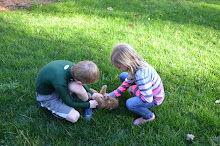Everyone remembers.
Ask anyone over the age of twenty, and she can likely tell you where she
was that horrific morning. Eleven years
ago today, I was in an elementary school in a northern suburb of Atlanta. I was waiting for a group of eight-year-old struggling
readers to enter my classroom, sit down at a kidney shaped table, and begin the
demanding process of decoding words in a language that was not native to
them. I thought it a noble job. I believed I was making a difference.
Nine-hundred miles away there were other teachers in other
classrooms doing similar things: grading papers, planning lessons, preparing
materials, praying for patience. Over a
decade later, I’m sure they can easily recall what they were doing the precise moment
an airplane flew into the World Trade Center.
In fact, I imagine their memory is much more astute than mine. They heard
the blast.
The rest of that day exists only as a blur in my mind. When I attempt to remember, I simply see snapshots
of my students faces mingled with the disturbing images of airplanes and smoke
and fire and buildings crumbling to the ground as though they were made of sand.
In the days that followed, I watched more television than I’ve
ever watched in my life, desperate for answers like everyone else. How could such a terrible thing happen? Why would anyone desire death for a complete
stranger? Where in the world do we go
from here, now that we have witnessed the depth of disgust one human being can
have for another?
More than ten years later, pieces of the puzzle have been painfully
constructed. We now have a warped
picture of the events of that day – a story showing a legacy of hatred that
goes back thousands of years. There are
names and faces of those who died and those who killed them. There are facts and statistics about the speed
of planes and the gallons of fuel and the tons of rubble. We watch documentaries and feel a familiar
anguish as our stomachs twist into knots of confusion, fear, and sadness. We are filled with despair over a tragedy so
immense it will forever cast a shadow of doubt about the safety of our
nation. And as the tears fall yet again,
we are confounded with the same questions.
How . . . and why?
The answers have never really come. I suppose they never will.
Yet every year in September, I’m reminded of something
besides the needless death and destruction that will always exist in a world
where there is evil. Every year in
September, I remember that as I walk through the activities and duties of my
day under the banner of freedom America provides, there are heroes who walk
among me.
They are real people.
Normal people. They have jobs and
spouses and kids and mortgages and problems, like the rest of us. But one day, when the time comes for me to
explain the true definition of ‘hero’ to my own children, I will point to these
people. I will share the story of September
11 with Charlie and Libby, and as the memories of that day overwhelm me with
grief, I will hold my children close and tell them about the firemen who ran towards the fire. I will tell them about the passengers who stormed
the cockpit of an aircraft moving five-hundred miles per hour. I will tell them about the employees who
rushed back into the burning buildings. I will tell them about the doctors who raced
to the crime scene with as many supplies as they could carry. I will tell them about the police officers
who worked endless hours searching for survivors. I will tell them about the citizens who showed
up with water and food and comfort, unwavering in their determination to help.
September 11, 2001 was an awful day. It will go down in the history of the United
States as one of the worst days ever. It
was a day when the threat of terrorism became an appalling reality. It was a day when thousands of people lost
their lives and thousands more lost people they loved. It was a day most of us will never forget. Still, I think the most important thing about
September 11 is the fact that it wasn’t just
a dreadful day. It was also a day when
normal people became heroes. 